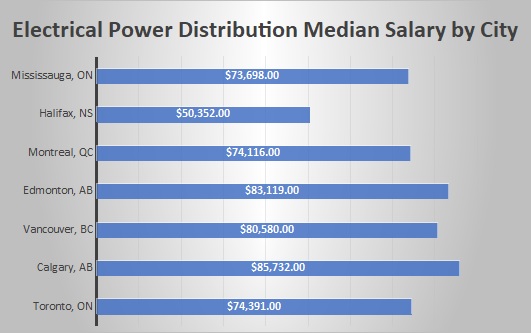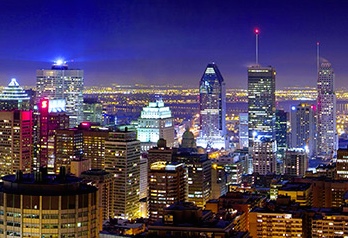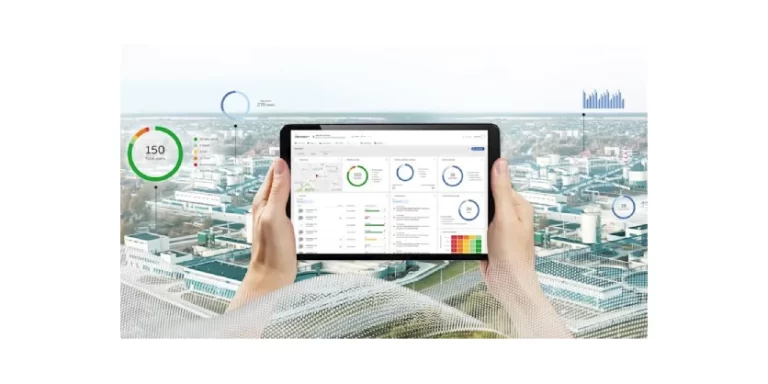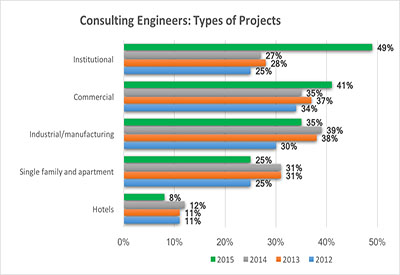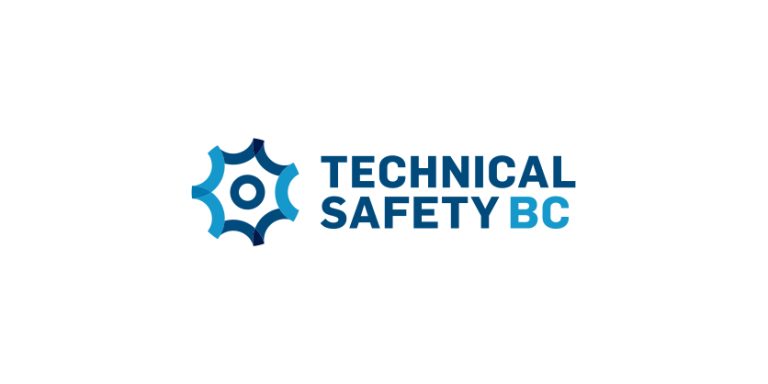Top 5 Commercial Lighting Trends in 2019
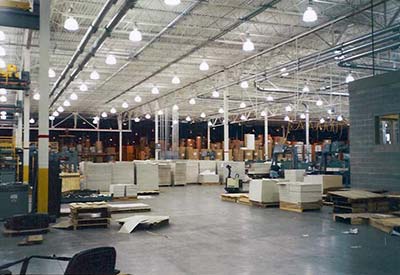
May 13, 2019
Disruption is the new norm in the lighting industry. Commercial lighting is now more than illumination as seen by these top five trends for 2019.
1. Occupant health and wellbeing takes centre stage
The connection between natural light and health, well-being, and productivity is now taking centre stage in commercial real estate. Building owners and facility managers are incorporating Tunable White (TW) technology as part of their lighting strategy. Tunable White technology is designed for human centric lighting (HCL) applications that balance the visual, emotional and biological needs of humans.
TW technology mimics natural daylight by producing the hues and brightness of nature during a 24-hour cycle. This mimicry can have a profound effect on humans by positively impacting the human body’s circadian rhythm, which is our 24-hour sleep-wake. Cool white with its higher proportions of blue light can have a stimulating effect on people; warm white with higher proportions of yellow can have a calming effect. A TW solution can aid in improving occupant concentration, performance, and overall health and well-being.
Initially, TW technology will be deployed in classrooms where student focus is critical, offices where concentration is important, and skilled nursing or hospital patient rooms where occupants may experience sleep cycle issues and other health-related problems.
2. Lighting systems — the tech infrastructure for IoT
You may remember that this trend was highlighted in Osram’s 2018 Commercial Lighting Trends post. It made Osram’s trends list again because sensor-laden lighting systems now have industry acceptance as the go-to infrastructure for data-driven smart building apps beyond lighting.
Over the past year, customer pilot programs using Software-as-a-Service (SaaS) space optimization apps (see the next trend listed in this piece) have proven successful, leading the way to industry adoption. Expect to see forward-thinking building owners leverage lighting systems as the data network infrastructure for smart building applications.
Smart building IoT applications require data collected from a network of sensors. At a fundamental level, a connected lighting system is also a wireless sensor network providing real-time data about a space and how it is used. Fixture-integrated sensors in every luminaire become data nodes on the wireless lighting system network collecting physical and environmental data about a space, including light, temperature, occupant activity, and levels of volatile organic compounds (VOCs), moisture and/or noise. These data are then collected and processed by the lighting system manager and sent to the Cloud where they are stored for easy access by third-party software developers. Software developers create smart building applications such as capacity planning, conference room optimization, general space optimization, indoor air quality monitoring, indoor wayfinding, and more.
Smart technology is proving to increase property values while saving energy costs, improving building operations, boosting productivity, and strengthening tenant relationships. In 2019, we expect to see more OEMs integrating sensors in luminaires to create smart luminaires that can be an integral part of a connected lighting system.
3. Space-as-a-service enters sharing economy
In commercial real estate, we are seeing a move from products to services and ownership to access as part of the new sharing economy. Examples of the sharing economy in other industries include buying cloud services instead of building out a data centre, listening to streaming music instead of purchasing CDs, or buying a ride from Uber or Lyft instead of purchasing a car.
Space-as-a-service is another example of the sharing economy. It is taking hold in the commercial real estate industry and has two meanings: it refers to
- space that is procured on-demand whether by the hour, week, month or year (think WeWork)
- a workplace, however procured, that provides space and services appropriate for individual jobs to be done
This second meaning is particularly important because with technology advancements and increased automation, jobs are becoming more focused on non-repetitive human skills such as creativity, collaboration and innovation. Repetitive tasks that many workers do today will be done by machines tomorrow so their roles will change and require human skills that are less repetitive and cannot be automated.
To do these new jobs, people will need more varied spaces that are conducive to the human skills required. If you have a project that requires a lot of writing, you may need a quiet space where you can concentrate uninterrupted. If you need to create a new product or innovation, you may require a room that supports team collaboration. Forward-thinking companies are realizing the importance of being prepared for the future and the new jobs that will be done by humans. They recognize the need for a flexible work environment that can quickly respond to this new job landscape.
The foundation of a space-as-a-service platform is the ability to reconfigure space on demand, and lighting plays an integral role. A networked lighting system with integrated sensors and individually controlled luminaires can be reconfigured to support specific jobs and occupant preferences quickly via software. As the job landscape changes, a lighting system can support those changes.
4. Optimum space utilization enabled by lighting system data
Companies need to get the most from their operating budgets, and space is the second largest cost to most organizations after salaries. Understanding how workspace is used is essential — too much workspace is a waste of capital, and too little creates unhappy workers, which can impact productivity.
Historically, space planning has been based on calculations using industry-standard formulas, software that addressed some of an organization’s requirements, or even a manual process. Often, this process took days or weeks to complete and lacked flexibility–changes mid-stream could be costly from a time and/or expense perspective.
This is no longer the case. Data-driven space optimization applications have been ushered into the commercial real estate industry as a sought-after smart building IoT application. Workspace analytics solutions based on the SaaS (Software as a Service) business model remove the guesswork experienced with out-of-date processes. Right sizing, restacking, conference room rationalization, and overall space optimization decisions can be made on an ongoing basis using real-time space usage data. It is more cost effective, accurate and flexible than traditional methods.
More companies will leverage a workspace analytics SaaS business model to optimize their space. The application will be enabled by data from the networked lighting system.
5. Green is growing
In 2019, sustainability will be a continued focus for property owners. Investor momentum behind sustainable investments is growing, and there is more importance being placed on the human health and environmental impact of their property assets.Concerns about climate change, stringent building codes, and a strong interest from tenants in reducing the amount of energy used, is driving property owners to focus on advancing the development of energy-efficient strategies. LED lighting and control strategies play a significant role in going green.
Using lighting control strategies, occupancy sensors, and reduced lighting plug load supports green initiatives by reducing overall energy consumption. Control strategies such as daylight harvesting bring natural light to the building interior reducing the need for artificial lighting. Sensors in every luminaire collect occupancy data and feed it to building management systems (BMS), which in turn regulate HVAC — turning it off/on depending on occupancy. Dimming lights during high peak periods in the electric grid reduces plug load and lowers utility costs while still providing effective light levels for occupants.
While the exact definitions of metrics for “net zero energy” vary, the World Green Building Council (WGBC) states that most agree that a Net Zero Energy Building (NZEB) is highly energy efficient and fully powered from on-site and/or off-site renewable energy sources. There’s now a LEED Net Zero certification program (currently in beta) for any project that previously earned a LEED for Building Design and Construction or for Operations and Maintenance. The new designation recognizes net-zero operation in energy, water, waste and carbon and aligns with existing LEED requirements. NZEBs are gaining attention and starting to advance from concept to realization with a number of pilot programs and initiatives underway across the U.S. and Canada. In fact, we expect to see some net zero buildings opening in 2019.
This article was first published online by Osram: info.osram.us/blog/top-5-commercial-lighting-trends-in-2019.



